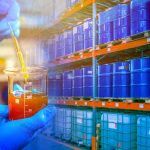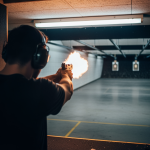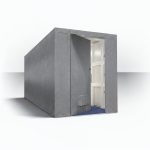Polyurea stands apart in the world of protective coatings. Its fast-curing characteristics and ability to withstand harsh environments have earned it a place in demanding industries. But few take the time to look beyond the surface of the coating and examine how it is actually made. The production of polyurea involves exact chemistry, close control over ratios and temperatures, and an evolving approach to improving the material at the formulation level.
Chemistry That Sets It Apart
Polyurea forms through a reaction between an isocyanate and an amine-terminated resin. These two components do not require catalysts to react. The moment they meet, the process begins. The result is a structure that includes urea linkages, which help give polyurea its resistance to chemicals, its flexibility, and its toughness under stress.
The isocyanate side may be aromatic or aliphatic, depending on the application. Aromatic isocyanates cure fast and work well for interior or buried applications. Aliphatic isocyanates provide better UV stability, making them suitable for coatings exposed to sunlight. The resin side balances flexibility and strength. Longer chains increase elasticity, while short-chain diamines provide rigidity and hardness.
Raw Material Handling and Preparation
To prepare the components for reaction, both sides need to remain pure and stable. The isocyanate must stay dry, since it can react with moisture. Storage tanks, hoses, and feed lines must be sealed from ambient air. The resin side, although more tolerant of humidity, still requires its own precautions. Settling, phase separation, and contamination can affect its performance. Before any production run, both components undergo testing for viscosity, temperature stability, and chemical composition.
Manufacturing Process from Start to Finish
Some polyurea systems begin with a prepolymer step. This means partially reacting the isocyanate with a portion of the resin in advance. The result is a thicker, more stable product that still reacts rapidly when the remaining components are introduced. Other systems forgo this step and combine the two parts on the job site using heated high-pressure proportioning units.
Once ready, the two components are pumped into a spray gun where they mix just before application. At this point, timing becomes critical. The material sets within seconds. Any delay or imbalance causes problems like poor adhesion or uneven texture. Temperatures are typically elevated to reduce viscosity and improve spray quality, but overheating can degrade the chemicals or introduce safety hazards.
Control and Measurement
During production, samples are taken to measure gel time, cure time, and performance under stress. Tensile strength and elongation give insight into how the material will behave once it sets. Shore hardness shows how well it resists indentation. More advanced tests check resistance to water, chemicals, heat, and UV exposure. The goal is consistency. A polyurea coating must perform the same every time it is applied.
Failures in the field almost always trace back to problems in one of three areas: the formulation, the equipment, or the application. That’s why quality control starts with the raw material and continues through every step of manufacturing. Even small changes in temperature or mixing ratio can alter the outcome.
Industry Advances and Scientific Work
What sets some polyurea manufacturers apart is their focus on evolving the science behind the product. Adding new fillers, like aluminum or ceramic microspheres, changes the weight, thermal resistance, and even the appearance of the final coating. Other experiments aim to increase pot life without sacrificing speed. Still others try to improve adhesion without relying on primers.
These innovations don’t happen by accident. They require testing, field trials, and a deep understanding of polymer science. This is where research-driven companies continue to lead. By investing in better production equipment, raw material purity, and novel additives, they push the material forward.
Environmental and Safety Factors
Because isocyanates react quickly and are sensitive to air and moisture, safe handling becomes part of the process itself. Ventilation, protective gear, and containment protocols reduce the risk to operators. Production facilities use closed systems to prevent emissions and ensure precise delivery of raw materials. Training remains key. Even the best formulations fail when used incorrectly.
Newer formulations have improved in their environmental profile. Some now feature zero volatile organic compounds. Others are designed to bond to damp surfaces or cure in cold weather, reducing the need for energy-intensive preparation. Still, proper manufacturing practices and attention to waste management remain vital.
Conclusion
Polyurea coatings are not just mixed and sprayed. They result from a precise manufacturing process rooted in polymer science and refined through years of hands-on experience. From the chemistry of the raw materials to the conditions under which they react, every part of the process matters. Those working behind the scenes—engineers, chemists, applicators—carry the responsibility of getting that process right.
The more that people understand how polyurea is made, the better the choices they can make when selecting, applying, or recommending it. Whether used for infrastructure, automotive, or industrial containment, a coating’s performance depends on the science behind it and the care taken during its production.






